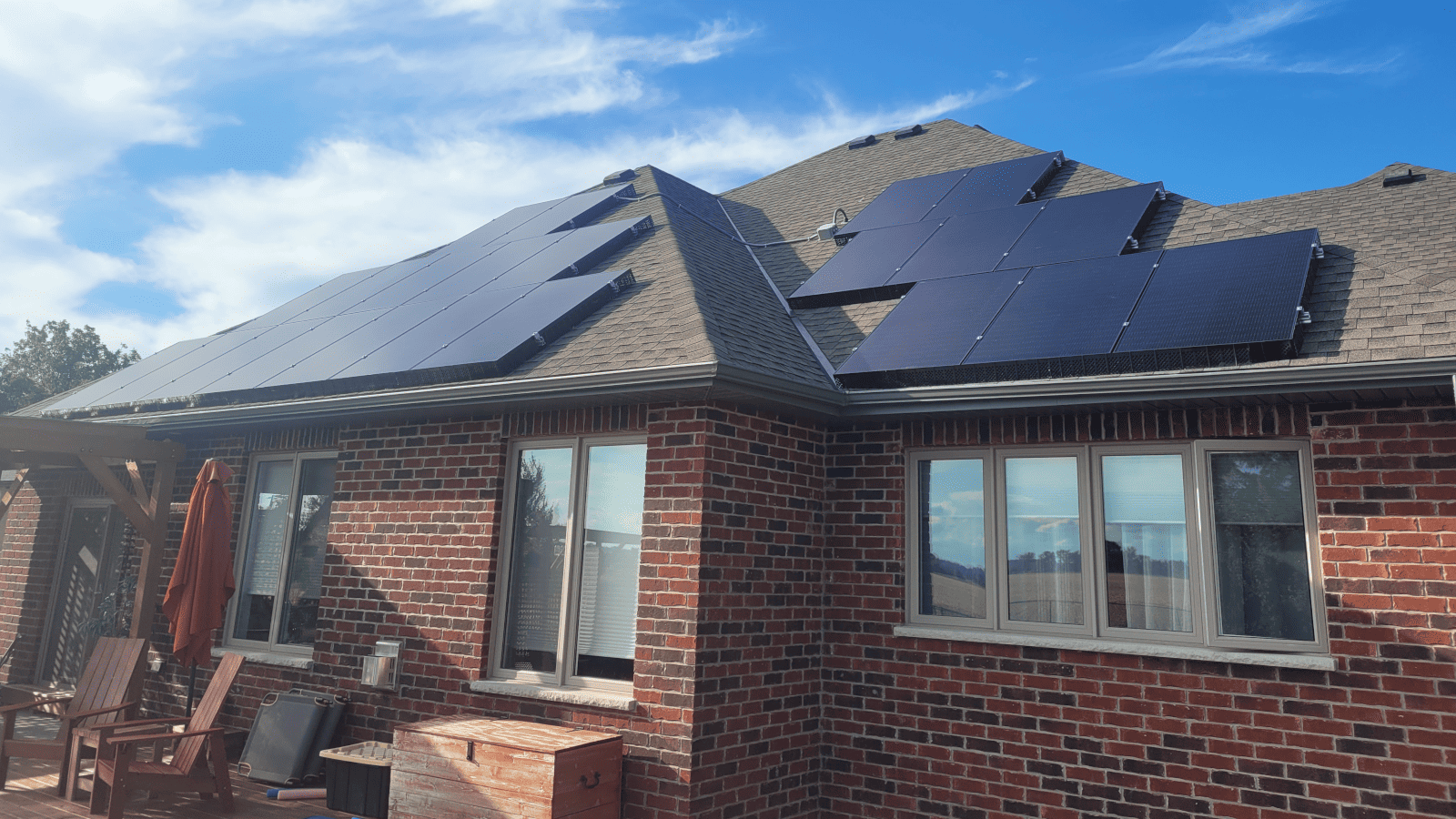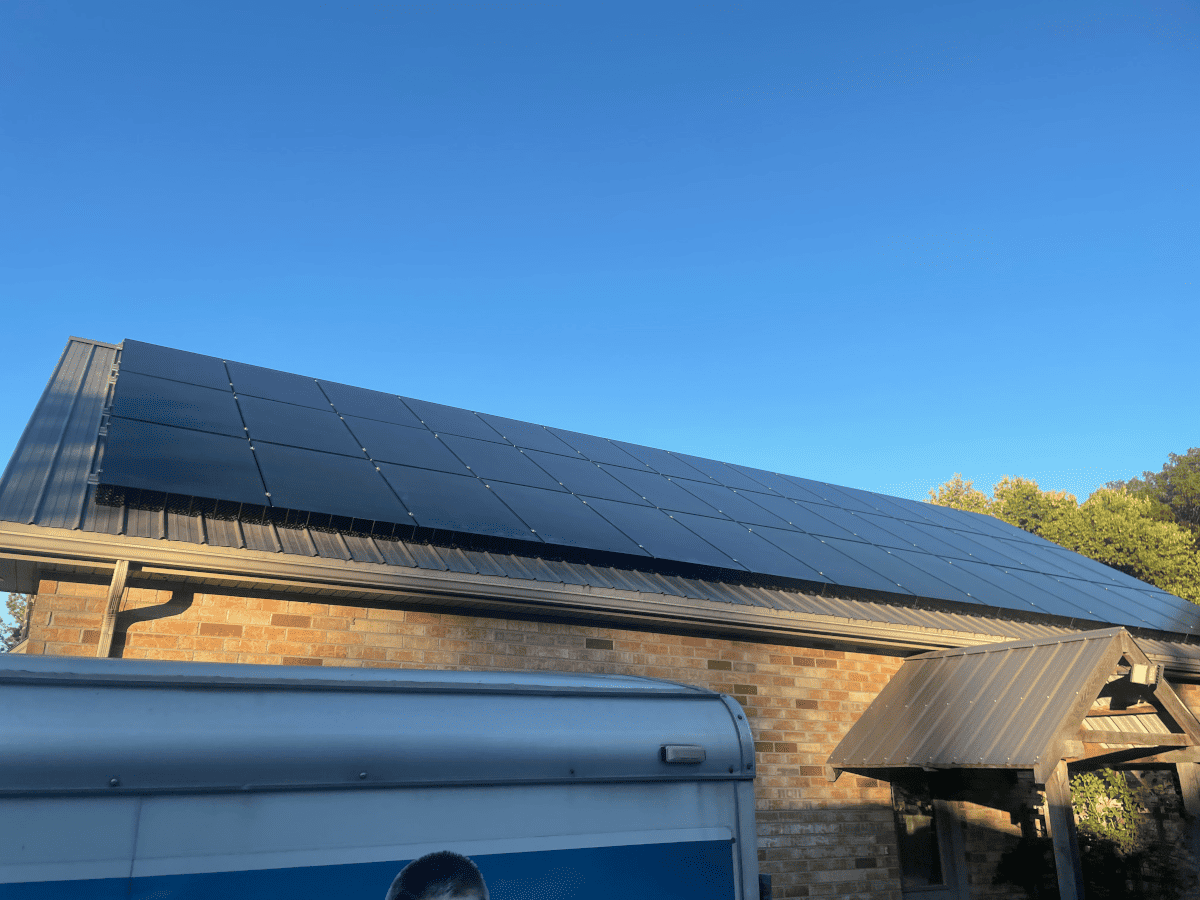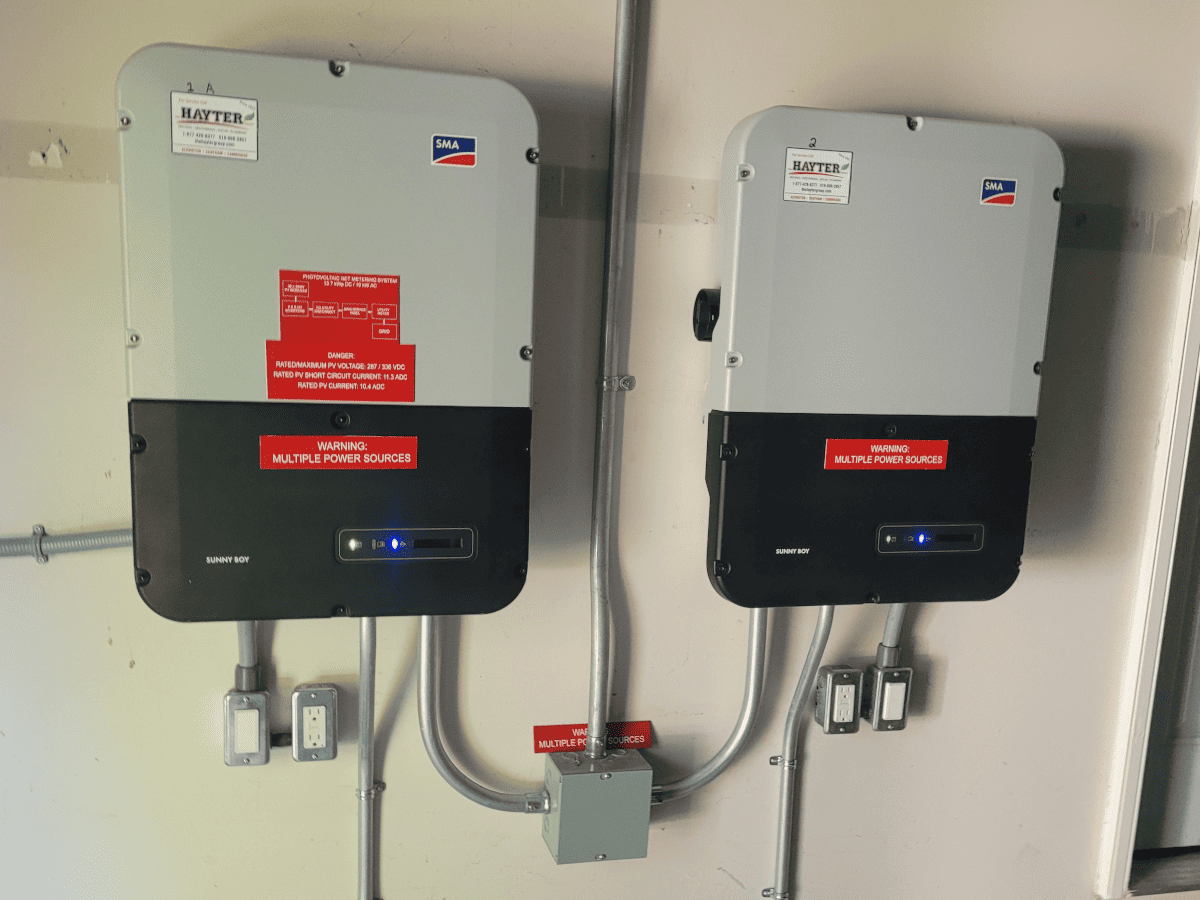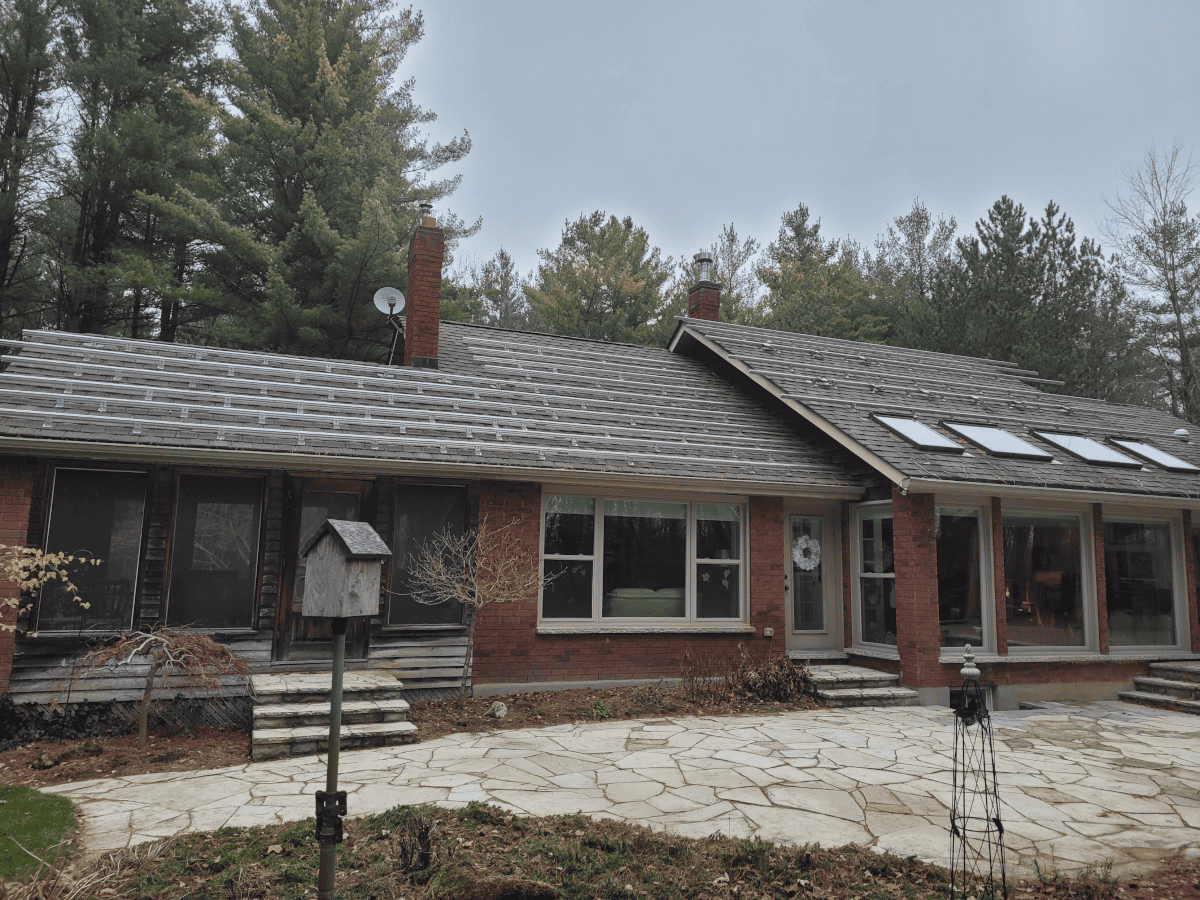
Are you considering switching to solar energy for your home or business? Look no further! In this Solar 101 series, we will provide a comprehensive overview of solar panel systems and the equipment needed to harness the power of the sun.
But before diving into the specifics, let’s first discuss the history of solar technology. Ever since 1954, when scientists at Bell Telephone discovered that silicon – an element found in sand – produced an electric charge when exposed to sunlight, solar technology has rapidly evolved and is now used in over 43,000 homes throughout the country (Canadian Renewable Energy Association, 2021).
Solar panel systems offer a clean and affordable energy alternative for homes and businesses. So how do these systems work? Simply put, solar panels absorb the energy from sunlight and convert it into direct current (DC) electricity. This DC electricity is then passed through an inverter, which converts it into the usable alternating current (AC) electricity that powers your home or business. You can use this electricity as it is, store it with a solar battery, or even sell it back to the grid. In the following sections, we will go into more detail about the different components of a solar panel system and their functions. Check out our breakout segments below outlining what makes up a solar system.
Solar Modules
Solar modules, a.k.a. solar panels are devices that is used to convert sunlight into usable electricity. It is made up of a series of solar cells that are typically made from silicon, along with wiring, a metal frame, and a glass cover. Solar panels are typically three feet wide and six feet tall, and each panel weighs around 50-60 pounds.

The active component of a solar panel is in the silicon cells, which are covered by a sheet of glass and held together by a metal frame. When sunlight hits the silicon cells, it activates electrons which begin to flow through the cell. Wires in the cells capture this flow of electrons and combine it with the output of other cells in the panel. There are two main types of solar cells: 60 cell and 72 cell formats. However, some companies are experimenting with new ways to increase efficiency by using “half-cut” panels which doubles the number of cells to 120 and 144 respectively. As technology advances, some manufacturers also have products expanding them to 132 and 156 with their newer 66 and 78 cell modules.
When choosing solar panels for your home, it is important to consider the quality, durability, and long-term performance of the product. It is also important to consider the specific needs of your home and budget. It is a good idea to research and compare different options before deciding. A Hayter Solar Specialist will be more than happy to discuss the differences and what manufacturers we have partnered with and why.
Inverters
Inverters are an integral part of a solar panel system as they are responsible for converting the direct current (DC) electricity generated by the solar panels into the alternating current (AC) electricity that is used in homes and businesses. There are two main types of inverters: string (or centralized) inverters and microinverters.

String Inverters
A single inverter that is connected to the entire array of solar panels and is the least expensive option. However, if one panel in a string is shaded or not performing optimally, it can reduce the performance of the entire string. In some cases where necessary, two or even three of these string inverters can be used for larger projects.
String inverters are typically installed near to your hydro meter and typically will have an area identified for installation during the site-assessment stage of the project.
Microinverters
Microinverters are installed at each individual solar panel, allowing each panel to maximize production. This is particularly useful if some panels are shaded at different times of day or if they are not all facing the same direction. Microinverters tend to be more expensive than string inverters for this reason but do offer that added benefit.
One draw back (compared to string inverters) that could be brought up is the additional weight on the roof as the inverter portion of the system is now on the roof (as opposed to string inverters). Saying that, all projects will go through a structural analysis with an independent engineer to approve the roof load capacity to allow for microinverter installations.
Power Optimizers
Power Optimizers (or simply Optimizers) are a hybrid of microinverters and string inverters, with one being installed at each panel. They “condition” the DC electricity before sending it to string inverter and perform well in situations where panels are shaded or facing different directions. Power optimizer systems tend to be more expensive than string inverter systems, but less expensive than microinverter systems.
Racking
Solar racking systems, also known as mounting systems, are used to securely fix solar panels to various surfaces, including roofs, building facades, and the ground. These systems can be easily retrofitted to existing structures, including rooftops. When a solar array is mounted on a sloped rooftop (typically on a house), it is usually installed parallel to the roof with a small gap between the two to allow for ventilation. In residential applications, racking systems are often roof-penetrating to anchor the system in place. Flashing is used to protect the rooftop from any potential water damage or leaks caused by the penetrations.
One of the most common types of racking systems for roof-mounted solar panels is called a “ballasted” system. This type of system is attached to the roof using weights, such as concrete blocks or sandbags, rather than penetrative attachments. This makes it a good option for roofs that cannot support the weight of traditional mounting systems or for situations where penetrative attachments are not allowed.

Performance Monitoring
Performance monitoring systems are an important tool for ensuring that your solar panel system is operating at its best. These systems provide detailed information about the performance of your solar panels, including the amount of electricity they are producing on an hourly basis. This information can be especially useful in identifying any performance issues that may be impacting the efficiency of your system. There are two primary types of performance monitoring systems: on-site and remote.
On-site Monitoring
Involves installing a device on your property that records the electricity produced by your solar panels. This can be a useful option if you want to closely monitor the performance of your system and have easy access to the data.
Remote Monitoring
On the other hand, involves transmitting the performance data of your solar panels to a monitoring service that you can access online or through a mobile app. This can be a convenient option if you don’t want to have to physically check a device on your property to get performance updates.
Many of the most frequently used inverters in the residential market come with production monitoring apps that allow you to track the output of your solar panels. Some of these apps may also offer consumption monitoring, which can help you track the overall savings you are achieving with your solar panel system. However, it’s important to note that this additional consumption monitoring may come at an extra cost.
Summary
Performance monitoring systems are an essential tool for maximizing the electricity production and financial returns of your solar panel system. Whether you choose an on-site or remote monitoring system, these tools can help you identify any performance issues and ensure that your solar panels are operating at their best.



Our Newsletter keeps you up to date on all the latest green energy trends for your home! We’ll also let you know about all the latest rebates and promotions! You can unsubscribe at any time.

Interest Free up to $40,000
Complete major retrofits to your home through an interest-free loan of up to $40,000. The energy savings from your geothermal or solar installation will help

Lambton Renovates Program
Grants and Financing The Lambton Renovates program offers financial assistance to eligible households as follows: 10-year forgivable loan up to $20,000 Who’s Eligible? Market value
